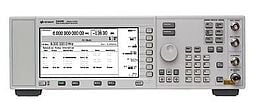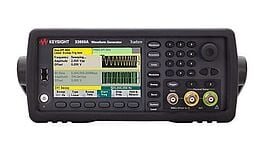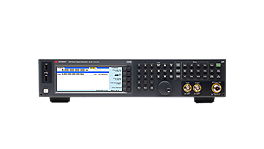- Introduction
- Types of RF Signal Generators
- Analog Signal Generators
- Digital Signal Generators
- Vector Signal Generators
- How RF Signal Generators Work
- Applications of RF Signal Generators
- Testing and Development of Electronic Devices
- Calibration of Equipment
- Communication Systems and Network Analysis
- Factors to Consider When Choosing an RF Signal Generator
- Common Features of RF Signal Generators
- The Importance of Accurate and Reliable Measurements in Electronic Testing
- Buy a Keysight Signal Generator and Increase Measurement Accuracy!
- Closing Thoughts From Keysight
- Whenever You’re Ready, Here Are 4 Ways We Can Help You
Picture this: you're an engineer, tirelessly working on a groundbreaking project that has the potential to revolutionize the world of wireless communication. But despite your best efforts, you're plagued by inconsistent results and unforeseen challenges.
The pressure mounts as you struggle to find the right tool to turn the tide, enhance precision, and ensure the success of your project. Now, what if I told you that there's a powerful instrument that can help you overcome these obstacles?
Enter the RF signal generator, the ultimate solution to the common frustrations experienced by engineers like yourself. This versatile and reliable device is the secret weapon that can unlock the full potential of your work in electronics testing and development.
By generating continuous or modulated radio frequency signals across a wide range of frequencies and power levels, the RF signal generator is the one tool that bridges the gap between theoretical design and practical implementation.
So let's delve into the fascinating world of RF signal generators, exploring the different types, applications, and remarkable ways they can elevate your engineering skills to new heights.
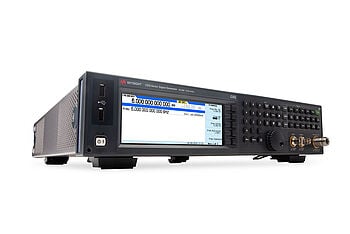
Types of RF Signal Generators
In the world of RF signal generators, you'll encounter three main types that cater to various engineering needs: analog, digital, and vector. Let's explore these powerful instruments and examine their key differences in terms of signal generation, frequency range, and modulation support.
| Generator Type | What They Do |
|---|---|
Analog Signal Generators: The Workhorses Keysights used signal generators can be used in various industries and applications – Source: Keysight | Analog signal generators create continuous wave signals using analog techniques. They boast wide frequency ranges and are best suited for fundamental RF testing tasks. Analog generators can support amplitude modulation (AM), frequency modulation (FM), and phase modulation (PM), making them a versatile choice for various applications. However, they may lack the precision and flexibility their digital counterparts offer. |
Digital Signal Generators: The Precision Masters Keysight 33600A Series waveform generators with exclusive Trueform signal generation technology offer more capability, fidelity, and flexibility than previous generation DDS generators – Source: Keysight | Digital signal generators use direct digital synthesis (DDS) or other digital techniques to generate signals. Their advantage lies in creating stable and accurate signals with minimal phase noise. Digital generators can support various modulation types, including AM, FM, PM, and pulse modulation. They offer greater precision and programmability than analog generators, making them a popular choice if you need more control and customization. |
Vector Signal Generators: The Multi-Talented Prodigies Keysights MXG X-Series RF vector signal generator offers superior compliance testing – Source: Keysight | Vector signal generators combine the best of both worlds, offering advanced capabilities to generate complex modulated signals. These generators use digital techniques to create a signal's in-phase (I) and quadrature-phase (Q) components, allowing precise control over amplitude, frequency, and phase. Vector signal generators excel at generating signals for modern communication systems, such as those used in cellular networks, Wi-Fi, and Bluetooth. They support various modulation schemes, including quadrature amplitude modulation (QAM), orthogonal frequency-division multiplexing (OFDM), and many others. |
Analog Signal Generators
Analog signal generators are the foundation of RF signal generation. They produce continuous wave (CW) signals through oscillators, frequency control circuits, and modulators. Let's examine how these generators create signals, their frequency range, modulation capabilities, and when you might opt for an analog signal generator.
Analog signal generators create CW signals using an oscillator, which generates a sine wave at a specific frequency. The frequency control circuitry allows for fine-tuning of the oscillator's frequency, enabling you to set the desired output frequency.
Once the CW signal is generated, modulation is applied through the modulator circuit. Analog signal generators support various types of modulation, such as amplitude modulation (AM), frequency modulation (FM), and phase modulation (PM).
The frequency range of analog signal generators varies depending on the specific model and design, with some capable of covering a range from a few kilohertz (kHz) up to several gigahertz (GHz). This wide frequency range makes them suitable for a range of applications.
Analog signal generators are ideal for fundamental RF testing tasks, such as
- Characterizing components and devices
- Measuring frequency response
- Evaluating interference effects
They are often used in applications like RF system design, antenna testing, and electronic warfare simulations.
There are advantages and disadvantages to using analog signal generators. They offer wide frequency ranges, making them a versatile choice for a wide variety of applications.
However, they may lack the precision, stability, and programmability digital signal generators offer. Additionally, analog signal generators are more susceptible to phase noise and drift, which can affect the accuracy of measurements.
Digital Signal Generators
Digital signal generators are the precision masters of the RF signal generation world, offering enhanced control and customization. These generators create signals using digital techniques, such as direct digital synthesis (DDS), and utilize digital-to-analog converters (DACs) to output the final waveform.
Let's explore how digital signal generators work, their frequency range, modulation capabilities, and the key advantages that make them an attractive choice for engineers.
Digital signal generators generate signals by producing a digital representation of the waveform, typically through DDS. A numerically controlled oscillator (NCO) generates a digital waveform in a DDS system.
It is then passed through a digital-to-analog converter (DAC) to convert into an analog signal. The analog signal is filtered to remove spurious components and obtain the desired output.
The frequency range of digital signal generators varies depending on the specific model, with some devices capable of operating from a few hertz (Hz) up to several gigahertz (GHz). This broad frequency range makes them suitable for a wide array of applications.
Digital signal generators support numerous modulation types, including
- Amplitude modulation (AM)
- Frequency modulation (FM)
- Phase modulation (PM)
- Pulse modulation
- Frequency shift keying (FSK)
Their digital nature allows for precise control over the modulation parameters, providing greater flexibility to engineers.
There are several advantages to using digital signal generators.
- They offer superior frequency stability, precision, and phase noise performance compared to their analog counterparts. This increased accuracy is invaluable for demanding engineering applications.
- They provide greater programmability, enabling you to adjust parameters and create complex test scenarios easily.
- Their ease of use and integration with modern computer systems make digital signal generators popular in today's engineering landscape.
Vector Signal Generators
Vector signal generators are the multi-talented prodigies of the RF signal generation world since their advanced capabilities enable them to generate complex modulated signals. They are particularly adept at creating signals for modern communication systems, making them invaluable if you work on cutting-edge technologies.
Let's look into how vector signal generators work, their frequency range, modulation capabilities, and the key advantages that make them an essential tool for engineers.
Vector signal generators create complex modulated signals by generating a signal's in-phase (I) and quadrature-phase (Q) components. These two components are combined in a quadrature modulator to produce the final output signal.
This process allows precise control over the signal's amplitude, frequency, and phase, resulting in accurate and versatile waveform generation.
The frequency range of vector signal generators varies depending on the specific model, with some devices capable of operating from a few kilohertz (kHz) up to several gigahertz (GHz). This wide frequency range makes them suitable for numerous applications, particularly in modern communication systems.
Vector signal generators support a broad array of modulation schemes. Some include
- Quadrature amplitude modulation (QAM)
- Phase shift keying (PSK)
- Orthogonal frequency-division multiplexing (OFDM)
This extensive modulation support makes vector signal generators well-suited for testing and developing advanced communication systems, such as cellular networks, Wi-Fi, and Bluetooth.
There are several advantages to using vector signal generators.
- Their ability to generate complex signals is essential for testing and validating modern communication systems.
- They offer high precision and control, allowing you to create custom test scenarios and accurately evaluate system performance.
- Their compatibility with various modulation schemes ensures that vector signal generators remain relevant as new communication technologies emerge.
How RF Signal Generators Work
RF signal generators are essential for engineers, providing a reliable and versatile means of creating radio frequency signals. Despite the differences among analog, digital, and vector signal generators, they all share common components that facilitate signal generation.
Let's explore the basic components of RF signal generators and how they contribute to the functioning of the different types of generators.
The core components of an RF signal generator include the following:
- Oscillator. At the heart of any signal generator, the oscillator generates the basic sine wave signal at a specific frequency. An analog oscillator is used in analog generators, while digital and vector generators use a numerically controlled oscillator (NCO) in combination with digital techniques.
- Frequency Control. This component allows for fine-tuning of the oscillator's frequency, enabling you to set the desired output frequency. In digital and vector generators, the frequency control is often digitally programmable, providing precise and accurate frequency control.
- Modulator. The modulator circuit applies the desired modulation to the generated continuous wave (CW) signal. This component varies depending on the type of modulation supported by the generator, such as amplitude modulation (AM), frequency modulation (FM), or phase modulation (PM).
- Digital-to-Analog Converter (DAC). Primarily found in digital and vector signal generators, the DAC converts the digitally generated electrical waveform into an analog signal. This component plays a critical role in ensuring the accuracy and stability of the generated signals.
- Output Amplifier and Filter. The output amplifier boosts the signal to the desired power level while the filter removes any unwanted frequency components, ensuring a clean output signal.
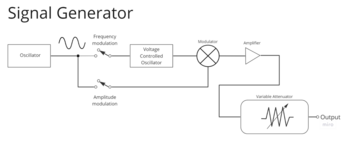
Applications of RF Signal Generators
RF signal generators play a critical role in various engineering applications, from industry to hobbyists and enthusiasts. These versatile instruments contribute to designing, developing, and testing various electronic devices and systems. Let's look into specific examples of how RF signal generators are used.
Testing and Development of Electronic Devices
RF signal generators are indispensable tools for engineers during the testing and development of electronic devices. They facilitate the generation of precise and controlled signals, crucial for evaluating the performance of various components such as amplifiers, filters, mixers, and more.
Along with specific examples, let's explore how RF signal generators are employed in industry settings for testing and development.
Amplifier Testing
RF signal generators test the performance of amplifiers by injecting a known input signalinto the amplifier and measuring the output signal. You can then evaluate the gain, linearity, noise figure, and other crucial characteristics of the amplifier, ensuring optimal performance within the electronic system.
- Example: In the development of cellular base stations, RF signal generators test the performance of power amplifiers, which are responsible for amplifying the signal before transmission. This ensures the base station can transmit a strong and clear signal to mobile devices.
Filter Characterization
Engineers use RF signal generators to characterize filters by assessing their frequency response, insertion loss, and out-of-band rejection. By injecting a known signal into the filter and measuring the output, you can verify whether the filter meets the desired specifications.
- Example: In the design of radar systems, RF signal generators test the performance of filters that selectively pass specific frequency bands while rejecting others. This ensures that the radar system operates efficiently and accurately.
Mixer Evaluation
Mixers, which shift the frequency of a signal, are tested using RF signal generators by injecting two input signals and measuring the output. This allows you to assess the mixer's conversion loss, isolation, and spurious signal generation.
- Example: In satellite communication systems, RF signal generators test the performance of mixers that convert the frequency of the received signal to an intermediate frequency, ensuring the communication system functions effectively.
Antenna Testing
RF signal generators play a vital role in antenna testing by producing controlled signals for evaluating the antenna's radiation pattern, gain, and efficiency.
- Example: In the aerospace industry, RF signal generators test the performance of aircraft antennas, ensuring reliable communication and navigation capabilities.
Calibration of Equipment
RF signal generators play a vital role in the calibration of electronic test equipment, ensuring the accuracy and reliability of these instruments. Calibration is essential for maintaining the integrity of measurements and minimizing potential errors.
Let's look at how RF signal generators can calibrate equipment, such as frequency counters, spectrum analyzers, and more, along with specific examples from the industry.
Frequency Counter Calibration
Frequency counters measure the frequency of a signal, and calibrating them is crucial for ensuring accurate measurements. RF signal generators provide a known reference frequency, allowing you to adjust the frequency counter to match the reference signal, ensuring accuracy.
- Example: In a telecommunications testing laboratory, RF signal generators calibrate frequency counters, which measure the frequency of various communication signals, ensuring the precise assessment of system performance.
Spectrum Analyzer Calibration
Spectrum analyzers analyze the frequency components of a signal. RF signal generators provide a known reference signal with specific characteristics, such as amplitude, frequency, and modulation. You can then adjust the spectrum analyzer's settings to match the reference signal, guaranteeing accurate measurements.
- Example: In a radio frequency testing facility, RF signal generators are used to calibrate spectrum analyzers that evaluate the emissions of wireless devices, ensuring compliance with regulatory standards.
Oscilloscope calibration
Oscilloscopes display the waveform of an electrical signal, and calibrating them is essential for accurate measurements of amplitude, frequency, and phase. RF signal generators provide a stable reference waveform, which enables you to fine-tune the oscilloscope's settings, ensuring the accuracy of the displayed waveform.
- Example: In an automotive electronics testing center, RF signal generators are used to calibrate oscilloscopes that assess the performance of various electronic components, such as engine control units, ensuring their proper functioning and reliability.
Power Meter Calibration
Power meters measure the power of a signal, and calibrating them is crucial for accurate measurements. RF signal generators provide a known reference power level, allowing you to adjust the power meter to match the reference, ensuring accuracy.
- Example: In a satellite communications testing environment, RF signal generators are used to calibrate power meters that measure the output power supply of satellite transponders, ensuring the effective transmission of signals to and from the satellite.
Communication Systems and Network Analysis
RF signal generators are the go-to tool for analyzing communication systems and networks. They provide controlled signals that allow you to evaluate the performance of wireless networks, simulate interference, and assess the resilience of communication systems under various conditions.
Along with specific examples, let's explore how to use RF signal generators in industry settings for communication systems and network analysis.
Wireless Network Performance Testing
RF signal generators can test the performance of wireless networks, such as cellular, Wi-Fi, and Bluetooth systems, by creating signals that emulate various communication scenarios. You can then assess the network's capacity, coverage, and signal quality under different conditions, ensuring optimal performance.
- Example: In a cellular network deployment, RF signal generators can test the network's ability to handle multiple simultaneous connections, ensuring that the network can maintain reliable communication even during periods of high usage.
Interference Simulation
RF signal generators can generate interfering signals that emulate real-world scenarios, such as co-channel interference or adjacent channel interference. This allows you to assess the impact of interference on communication systems and devise strategies to mitigate its effects.
- Example: In developing a Wi-Fi network for a busy office environment, RF signal generators can simulate interference from nearby Wi-Fi networks and other wireless devices, ensuring the network is resilient to interference and maintains stable connections.
Network Analysis and Troubleshooting
RF signal generators are invaluable for analyzing and troubleshooting communication systems. By injecting a known signal into the system, you can identify and locate faults, such as signal loss, reflections, or impedance mismatches, ensuring the efficient operation of the network.
- Example: In a broadcast television network, RF signal generators can analyze the performance of the transmission system, identifying issues like signal degradation or interference and ensuring that viewers receive a high-quality signal.
Stress Testing and System Validation
RF signal generators are used to stress test communication systems by subjecting them to extreme conditions, such as high levels of interference, rapid changes in signal strength, or varying modulation schemes. This helps you validate the system's robustness and reliability under challenging conditions.
- Example: In the design of a satellite communication system, RF signal generators can simulate the varying signal strength and interference that the system might encounter in space, ensuring that the communication system can maintain reliable operation throughout its mission.
Factors to Consider When Choosing an RF Signal Generator
Getting the perfect RF signal generator is the secret to unlocking precise and dependable test outcomes. As an engineer, you need to find an instrument that stands up to your expectations and caters to your unique needs. Here are some key factors to consider when selecting an RF signal generator.
- The frequency range of an RF signal generator is critical in determining its suitability for your application. Ensure that the generator covers the entire frequency range of your target system, from the lowest to the highest frequency. This will allow you to test and analyze various components and systems effectively.
- The output power of an RF signal generator determines the signal strength it can produce. Depending on your application, you may require a generator with high output power to test devices with high attenuation or a generator with a wide dynamic range to evaluate the performance of components under varying signal strengths. Ensure the chosen instrument can deliver the output power levels required for your tests.
- Different applications may require different types of modulation, such as amplitude modulation (AM), frequency modulation (FM), phase modulation (PM), or digital modulation schemes like quadrature amplitude modulation (QAM). Choose an RF signal generator that supports the modulation types relevant to your target system, ensuring you can accurately test and evaluate various communication scenarios.
- The accuracy and stability of an RF signal generator directly impact the quality of your test results. When selecting a generator, consider factors like frequency accuracy, phase noise, and temperature stability. High-quality instruments with excellent precision and stability will ensure that your measurements are precise and reliable, ultimately leading to better test outcomes.
Common Features of RF Signal Generators
RF signal generators are versatile instruments packed with a tonne of features to cater to the diverse needs of engineers. These key features enable precise testing and analysis of electronic devices and communication systems. But what are these key features? Let's take a look.
- Frequency sweep is a powerful feature that allows the RF signal generator to vary its output frequency over a specified range, either linearly or logarithmically. This functionality allows you to test the frequency response of components and systems, such as filters, amplifiers, and antennas, revealing valuable insights into their performance across a variety of frequencies.
- Amplitude modulation is a widely used modulation scheme in which the amplitude of a carrier wave is varied in accordance with the amplitude of a modulating signal. RF signal generators with AM capabilities allow you to generate AM signals for testing and analyzing various communication systems, such as broadcast radio and aviation communication systems.
- Phase modulation involves varying the phase of a carrier wave according to the amplitude of a modulating signal. RF signal generators equipped with PM capabilities empower you to create PM signals for testing and evaluating the performance of systems that use phase modulation, such as satellite communication and some digital communication systems.
- Pulse modulation is a technique where the carrier wave's amplitude, frequency, or phase is switched between discrete levels, typically between an "on" and "off" state. RF signal generators featuring pulse modulation capabilities enables you to generate pulse-modulated signals for testing radar systems, digital communication systems, and other applications that require precise timing and synchronization.
The Importance of Accurate and Reliable Measurements in Electronic Testing
RF signal generators play a vital role in the broader testing ecosystem, ensuring that electronic devices are tested thoroughly and accurately.
The significance of precise and dependable measurements in the testing and development of electronic devices cannot be overstated, as these measurements form the foundation for optimizing device performance, enhancing reliability, and ensuring compliance with industry standards.
Keysight, a leading provider of electronic test and measurement solutions, offers a range of integrated solutions that allows you to achieve more reliable and efficient testing and development of electronic devices.
By delivering a complete suite of tools designed to work together seamlessly, Keysight simplifies the testing process and helps you obtain accurate measurements consistently.
Other benefits Keysight offers include
- Streamlined workflow. Integrated solutions enable a smoother workflow, as various components are designed to work together flawlessly. This fact eliminates the need to spend time and resources troubleshooting compatibility issues or integrating disparate tools, allowing you to focus on the task at hand.
- Enhanced accuracy. A complete solution designed by a single manufacturer ensures that all testing setup components are optimized for accuracy and reliability. This results in higher confidence in your measurements and allows for more effective testing and development.
- Improved efficiency. An integrated solution can streamline your testing process, reducing setup time and minimizing potential errors. This enables faster development cycles and quicker time-to-market for new products.
- Simplified maintenance and support. A single-provider solution means dealing with one point of contact for support and maintenance, making resolving issues easier and obtaining assistance when needed.
By utilizing integrated solutions from providers like Keysight, you can benefit from a seamless, efficient, and accurate testing experience!
Buy a Keysight Signal Generator and Increase Measurement Accuracy!
Regardless of the application, signal generators are versatile tools that make it possible to quickly and accurately measure, calibrate, and simulate signals. With a reliable signal generator from Keysight, you can be sure that your measurements are accurate and that your design meets industry standards and performs as expected.
We have waveform generators, swept-signal generators, vector signal generators, analog signal generators, pulse generators, and more! Get started today by browsing our selection of used signal generators. Say goodbye to inaccurate measurements and have confidence in your design. Shop now!
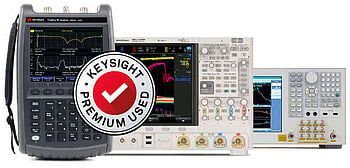
Closing Thoughts From Keysight
As we have seen in this article, signal generators champion the test and measurement world. With their many uses, these digital devices are the go-to tool for fast and reliable results in generating test signals.
At Keysight, we provide you with the best signal generators at an affordable rate. With our selection of signal generators, you can be sure that your measurements are accurate and that your designs will stand out from the competition.
So don't buy a used signal generator from anyone else. Shop at Keysight and see why we are a leading supplier of signal generators for professionals.

Whenever You’re Ready, Here Are 4 Ways We Can Help You
- Browse our Premium Used Signal Generator offers
- Call tech support US: 1 800 829-4444 Press #, then 2. Hours: 7 am – 5 pm MT, Mon– Fri
- Talk to our sales support team by clicking the icon (bottom right corner) on every offer page
- Talk to your account manager about your specific needs
